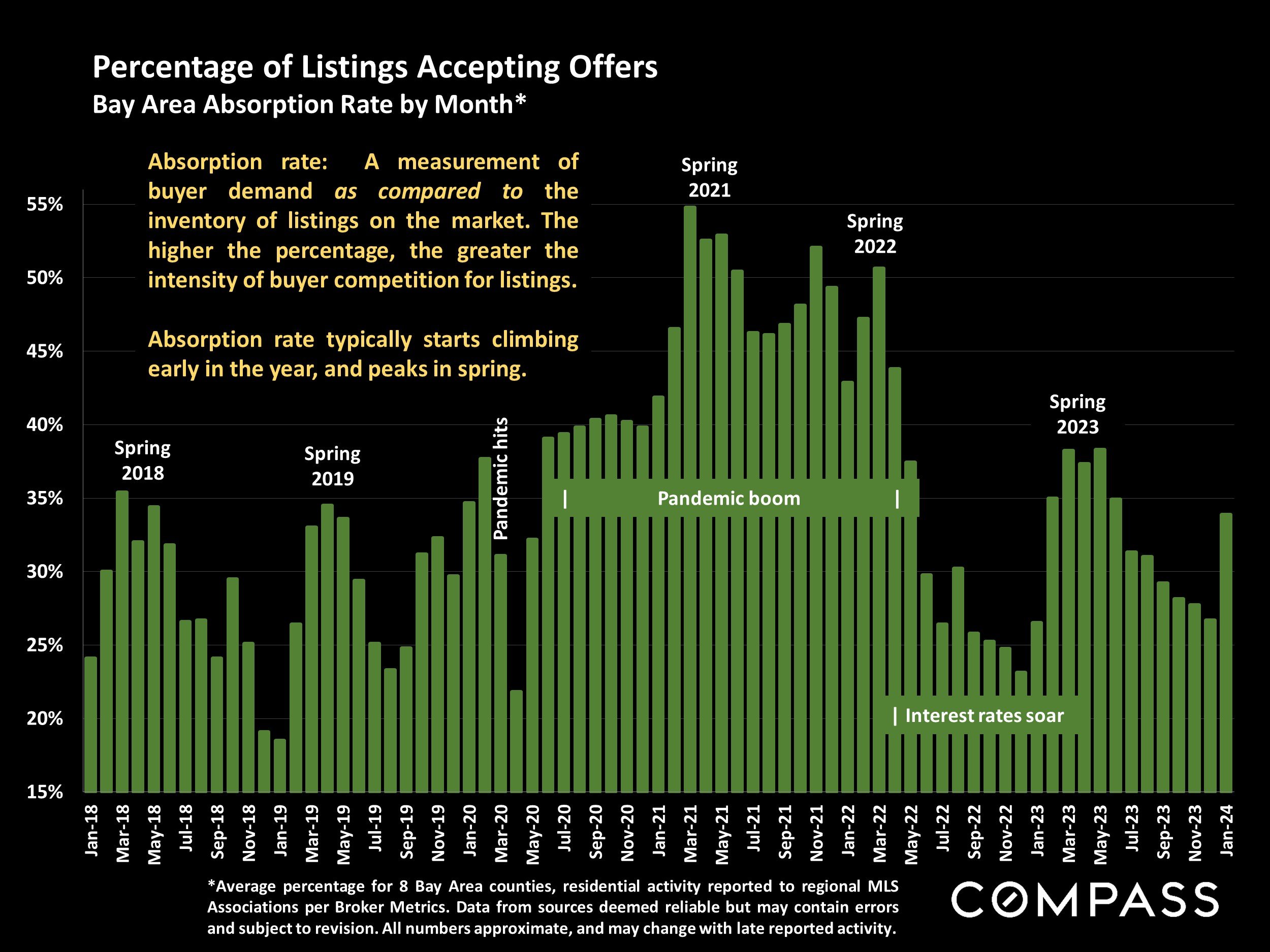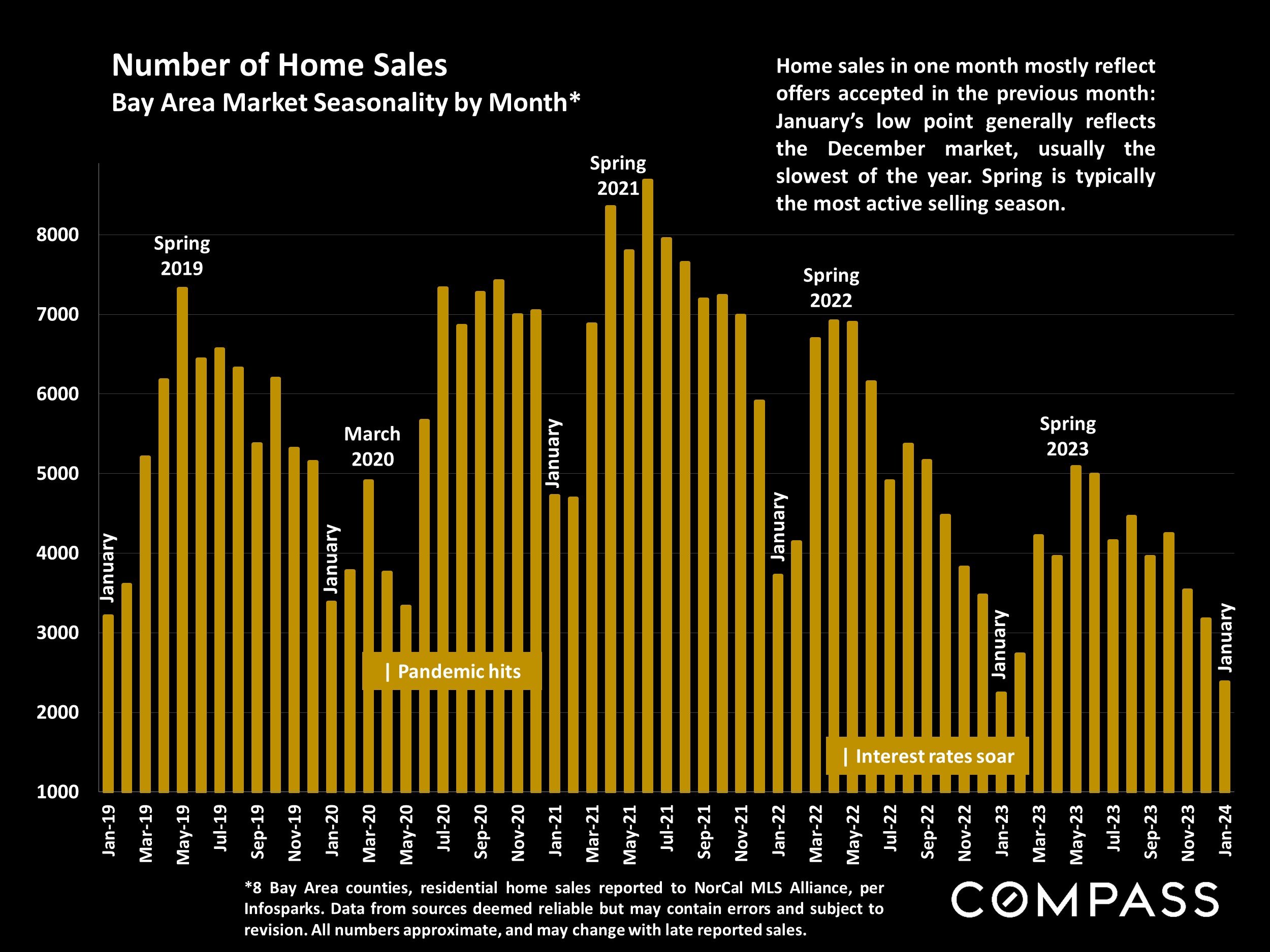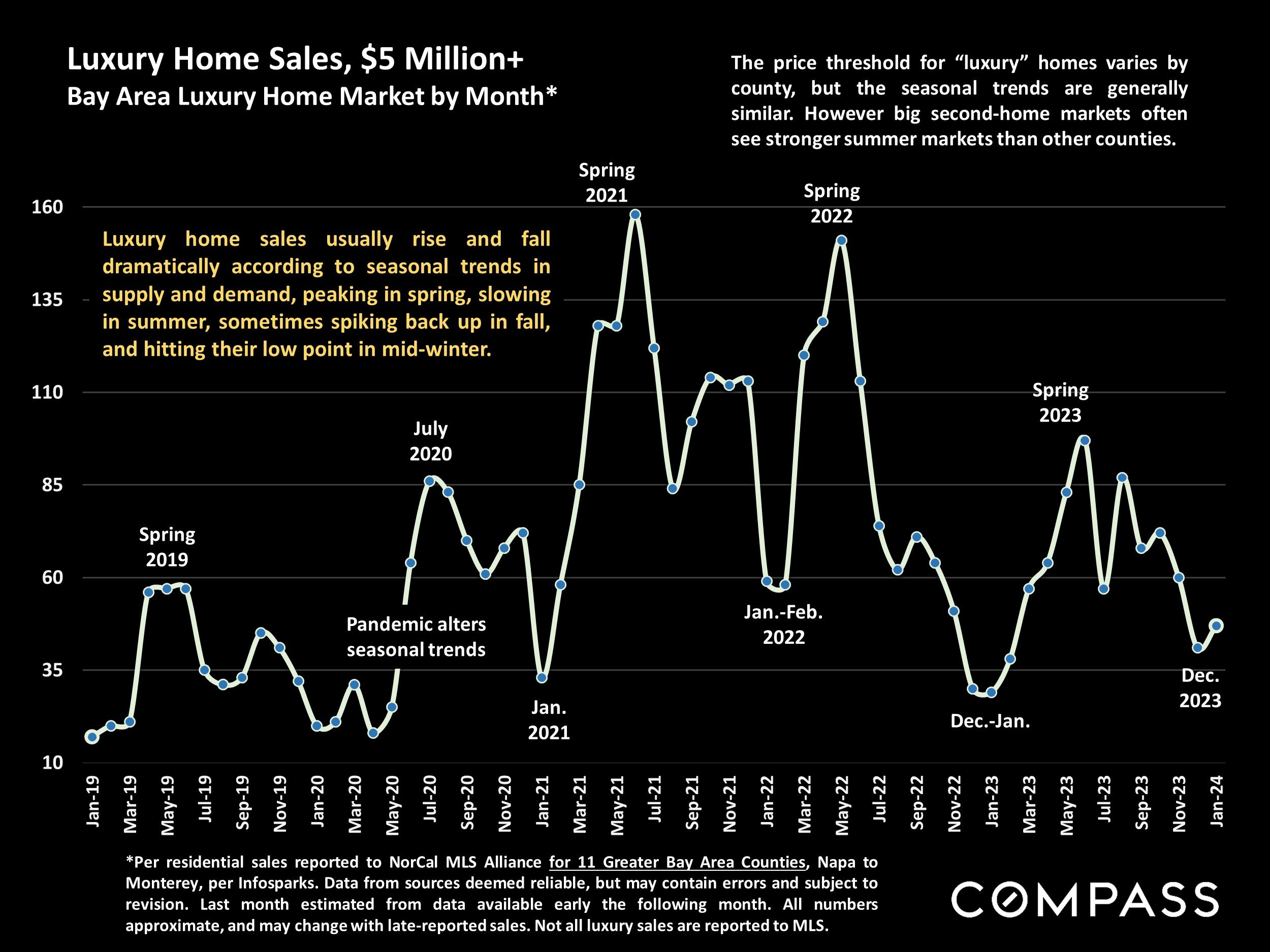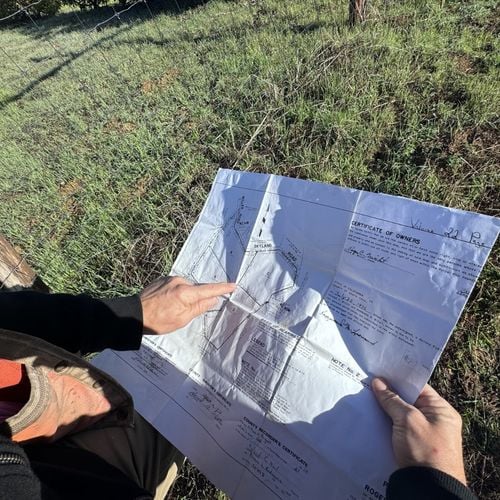Conventional wisdom says that the spring market is the best time to sell a home in the Bay Area. You may have wondered why people say that, but I’ve often wondered, is that actually true? As a long-time Bay Area REALTOR, I’ve seen amazingly fierce real estate markets in spring, summer, winter, and fall. The truth is, any time of year can be a great time to sell your home in the Bay Area. However, statistically speaking, for the past several years at least, the data do show that spring is the best time to sell a home in the Bay Area. And, I’ve got the charts that prove it!
Why the Spring is the Best time to Sell a Home in the Bay Area
But before we start digging into the data, let’s explore some of the factors which explain why spring tends to be such a crucial time for Bay Area real estate sales:
- Better Weather: Spring brings more pleasant weather, making it easier for potential buyers to visit and check out properties. Homes also tend to look more appealing in spring with blooming gardens and brighter days. I always tell sellers that plenty of natural light really helps sell homes, and there’s more of it spring and summer than at other times of the year.
- Increased Buyer Activity: Many buyers are more active during the spring as they aim to settle into a new home before the summer. Also, a lot of buyers knock off the search for the holidays, and get back into the market again once all that is behind them. This increased demand can lead to more competitive offers and potentially higher sale prices.
- Tax Refunds: Some buyers might be receiving their tax refunds in the spring, providing them with extra funds for down payments. While this isn’t likely to be much of a factor for higher-priced homes in the Bay Area, a healthy tax refund can go a long way to helping buyers in the lower segments of the market to pay for closing costs or beef up their down payments.
- Favorable Stock Market Conditions: In the Bay Area, the tech industry’s influence can lead to a concentration of buyers with higher disposable incomes, especially in Silicon Valley. Spring often aligns with fiscal cycles in the tech industry, potentially leading to increased buying power.
- Optimal Home Presentation: Spring’s natural light and blooming landscapes can enhance a home’s curb appeal, making it more attractive to potential buyers.
- Timing for Sellers: Sellers who list in the spring can often plan to move during the summer, which can be more convenient, especially for families with school-age children. And it’s also the time when a lot of older children will head off to college, leaving sellers with an empty nest they from which they are ready to move on.
How Seasonality Affects the Bay Area Real Estate Market
At the start of the new year, it’s common to see a surge in buyer activity, outpacing the introduction of new listings. This imbalance, where rising demand meets limited supply, often persists into spring. That’s why it can feel like the market comes alive even in early January; inventory is typically at its lowest ebb, and need-to-buy-now buyers who took a break for the holidays jump back into the market with a vengeance.
Fast forward just a few weeks, and spring’s longer days, better weather, and blooming flowers contribute to a shift in mood. This makes it the busiest and most competitive season for home sales, often with median prices peaking. As summer approaches, the market usually cools down due to vacations and school breaks, though areas with a significant number of second homes (think Santa Cruz, Carmel, and Lake Tahoe and the Wine Country) might still experience robust demand. Fall can bring a brief uptick in sales in some regions, but overall activity typically dwindles during the mid-winter holiday season.
However, it’s important to note that homes are sold year-round. Despite seasonal trends, well-prepared, competitively priced, and effectively marketed homes can attract multiple offers and sell quickly at any time. Conversely, even in a hot market, overpriced homes may not garner much interest. Economic factors can also amplify or diminish these seasonal patterns. Every sale is a unique blend of the property’s condition, the market conditions, and, crucially, the seller’s pricing strategy.
However, as the charts below clearly show, at least for the past six years, spring has been the best time to sell a home in the Bay Area. While I listed some reasons which contribute to this (better weather, tax refunds, timing for sellers, etc.), these factors feed in to what really makes the spring market – or any market – the best time to sell a home in the Bay Area: the between supply and demand. Regardless of the time of year, the law of supply and demand will, to a very large degree, dictate how much you’ll be able to sell your home for…and, simply put, that’s why spring is the best time to sell your home in the Bay Area.
How Supply and Demand Drives the Spring Market in the Bay Area
The real estate market’s dynamics are fundamentally shaped by the relationship between buyer demand and the available housing inventory. In scenarios where buyer interest outstrips the number of homes on the market, competition among buyers intensifies. This leads to quicker sales, frequent bidding wars, and escalating prices with buyers routinely overpaying for Bay Area homes. Conversely, when there are more homes for sale than buyers, the market dynamics shift. Homes linger on the market longer, aggressive negotiations by buyers become more common, and prices tend to stabilize or even drop.
This delicate balance between supply and demand is in constant flux, influenced by factors like seasonal trends. However, the forces driving these changes are multifaceted. They include interest rates, the state of the financial markets, employment trends, inflation, consumer confidence, housing affordability, demographic shifts, the frequency of property turnover, investor activity, new home construction, rental pricing and availability, tax laws, lending regulations, government policies, economic fluctuations, global conflicts, natural disasters, insurance costs, pandemics, and more. These elements can evolve gradually or cause abrupt market shifts, contributing to the significant volatility we’ve seen in the past several years.
Ultimately, all of those factors do one or more of four things: increase demand, weaken demand, increase supply, or decrease supply. More simply, these factors tip the scale of the balance between supply and demand.
Bay Area Spring Real Estate Market Data
Now that we have that out of the way, let’s explore the actual data. I have a series of charts which have been provided to me by the good people at Compass (thanks, Patrick!). Let’s start by taking a look at the absorption rate chart, which perhaps best highlights the law of supply and demand. The absorption rate is a measurement of buyer demand compared to the inventory of available listings on the market.

Spring Absorption Rate in the Bay Area
In the absorption rate chart, the taller bars mean that the available homes are being sold more quickly. For example, in March of 2021, 55% of all available homes for sale in the Bay Area were purchased. It was much the same a year later, when in March of 2022, about 51% of all available homes sold. Immediately thereafter, interest rates experienced a historic surge, and the absorption rate plummeted…before once again spiking up in March of 2023 to about 37%…which is about what it was in 2018 and a bit higher than 2019. It’s not reasonable to look at March 2020 because the market was curtailed by the pandemic lockdown.
But in each year highlighted in the absorption rate chart, you can see that the absorption rate hit a high in March, before beginning a generally downward trend as new listings come onto the market faster in spring than in January and February. It is interesting to note, though, that the absorption rate also picks up in October/November, which does tend to be the second-most-active market in the Bay Area.
Now, let’s take a look at Bay Area median house sale price trends, from 2017 through 2023. You can see in the chart below that the spring market – April, May, and June – are highlighted in yellow. Sure enough, you can see that the Spring months usually have the highest sale prices of the year in the Bay Area. It’s important to note though that the charts show closed sales. Sales typically take about 30 days to close, so these charts show homes that, for the most part, went under contract in March, April, and May.

Bay Area Spring Median House Price
Now let’s take a look at Days on Market. If you’re in the market to sell your home, you’ll want to have a high sale price, but you’ll also want a low “days on market” which means that your house will sell quickly and with few disruptive private showings and weekend open houses. And, contrary to what some people think, it’s a statistical fact that the faster your home sells, the more it’s likely to sell for. So it’s important that when you sell your home in the Bay Area that you get it sold quickly.
So it’s interesting to see that the chart below showing average days on market for homes sold in the Bay Area is typically the lowest in the spring months. This chart below is basically in the inverse of the median sale price chart above – it shows a low days on market in the spring months, which indicates homes sell quickly at this time of year. It also bolsters my contention that high sales prices are strongly correlated with few days on market, rather the other way around.

Bay Area Days on Market in Spring
Not only do homes tend to sell for the highest prices of the year in Spring, and not only do they tend to sell faster than at any other time of year – there are also more home sales in the Bay Area during the spring months than most other times of the year. A lot of people think that summertime is when we see the greatest number of home sales, but that ins’t usually true – although summer is in second place, then fall, and winter brings up the rear.
Of course, to my mind, it doesn’t much matter how many homes sell, other than to indicate how many buyers are out there. So certainly the chart below shows that there are a lot of people opening doors throughout the Bay Area with the intention of perhaps making an offer on the homes they’re connected to.

Bay Area Home Sales in Spring
But what about the luxury market segment in the Bay Area? It turns out, the luxury market in the Bay Area also does very well during the springtime. Check out the chart below. It shows very clearly that Bay Area luxury home sales peak in the springtime. Of course, the definition of what is a luxury home varies from place to place, but as a general rule, you can think of a luxury home which costs at least twice a given area’s median home price. In Santa Clara County, for example, this would mean that a home would need to sell for at least $3.5 million for it to be considered by most market watchers to be a “luxury home.”
When you look at the chart below, you will see that luxury home sales over $5 million almost always peak in the spring. One exception to that was spring of 2020, where the whole market was put on ice due to the COVID-19 pandemic. Aside from that year, the data clearly show that the number of luxury home sales is clearly highest in spring.

Bay Area Luxury Home Sales in Spring
That’s quite a lot of data to wrap your head around, but I think that these Compass charts do a great job of showing how strong the spring real estate market is in the Bay Area. But remember, while spring is traditionally a strong season for real estate, market conditions can vary year to year. It’s important to stay informed about current local market trends, especially in dynamic regions like the Bay Area.
In summary, the law of supply and demand in the Bay Area’s spring real estate market often leads to increased competition, higher prices, and a faster pace of sales, benefiting sellers but posing challenges for buyers. As a Realtor, understanding these dynamics can help you guide your clients effectively through the seasonal fluctuations.
Silicon Valley Luxury Homes for Sale
2
3
4
5
6
7
8
9
10
11
12
13
14
15
16
17
18
19
20
21
22
23
24
25



